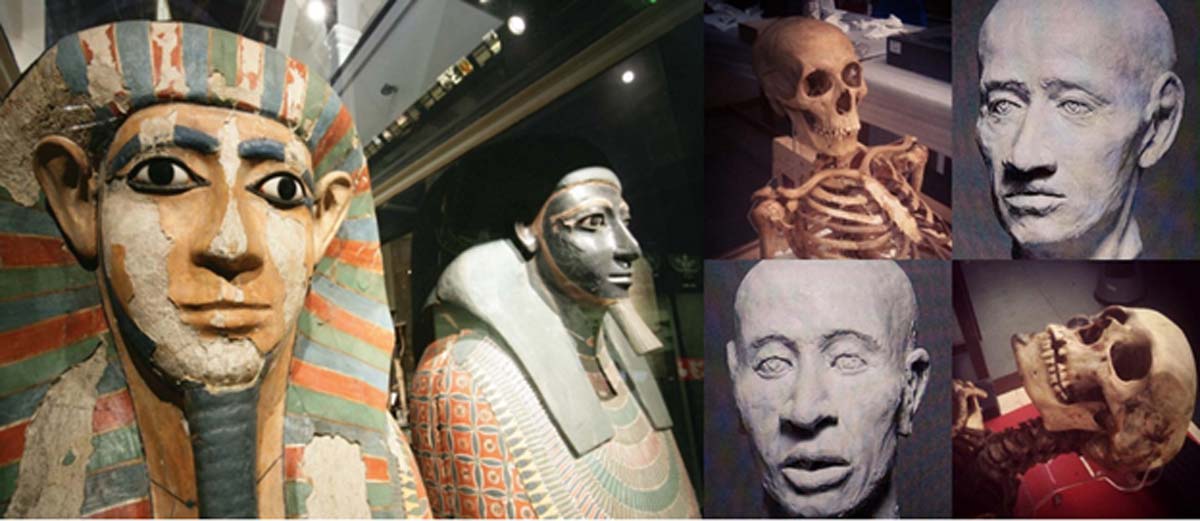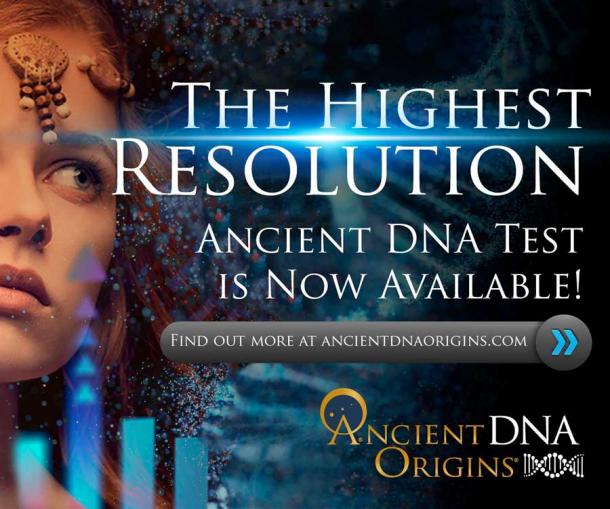DNA Test Reveals the “Two Brothers” Mummies’ True Relationship
Two millennia-old Egyptian mummies believed to be brothers for more than a century, are actually half-brothers a new study of mitochondrial and Y-chromosome DNA has recently revealed.
Ancient DNA Study Reveals the Familial Background of Two Mummies
The mummies known as the “Two Brothers,” were found next to each other in a tomb near the village of Rifeh in 1907. The tomb dates to ancient Egypt’s 12th Dynasty, between 1985 and 1773 BC. It has now been revealed that they shared the same mother, but had different fathers as archaeogeneticist Konstantina Drosou of the University of Manchester and her colleagues have concluded, after extracting DNA from the teeth of the two mummies according to their study.

Sarcophagi of the two mummies known as the ‘Two Brothers’. (Source: Manchester Museum, University of Manchester)
The new find demonstrates the importance of the maternal line of descent to the Egyptians. Science News reports that the coffin inscriptions mention a female named Khnum-Aa, which is the mother of both men. Furthermore, both mummies are described as sons of an unknown and unnamed local governor. Even though it was unclear if those inscriptions refer to the same man, the archaeologists who made the discovery concluded falsely that the mummies were full brothers, due to the fact that both were buried next to each other and had the same mother.
Throughout the years though, scientists noticed differences between the men’s skull shapes and other skeletal features, which made them suspect that the Two Brothers may not be biologically related after all. A few scientists went even a step further and “accused” the inscriptions for reporting that the two mummies had the same mother as inaccurate.

The two skulls and reconstruction of their faces at Manchester Museum (Public Domain)
Arguments over a Past Study on the “Two Brothers”
Additionally, a 2014 paper that reported differences between the two mummies’ mitochondrial DNA reinforced the speculations, as it was suggesting that one or both mummies had no biological ties with Khnum-Aa. Mitochondrial DNA usually gets inherited from the mother.
However, that study extracted ancient DNA from liver and intestinal samples using a method susceptible to contamination with modern human and bacterial DNA, Drosou’s team argued in their study.
- Egyptian Mummies – to unwrap or not to unwrap?
- First-of-its-Kind Mummy Study Reveals Clues to Girl’s Story
- Inscribed Curse on the Sarcophagus of King Ahiram Displays Earliest Use of Phoenician Alphabet

Margaret Murray famously unwrapping the Khnum-Nakht Mummy publicly in 1908. (Credit: The Manchester Museum)
New DNA Test Leaves No Doubts
As Science News reports, for the new study the team of scientists separated and collected short pieces of mitochondrial and Y-chromosome DNA from the teeth of both mummies, using the most contemporary scientific methods. The Y chromosome determines male sex and is inherited from father to son. This method reduces potential contamination from modern sources according to Dr. Drosou. “That new DNA evidence proves the hieroglyphic text [on the mummies’ coffins] to be accurate, at least in saying the mummified men had the same mother,” Campbell Price, an Egyptologist and study co-author, curator of the Egypt and Sudan collections at the Manchester Museum, stated as Science News reported.
Mr. Price believes that the coffin inscriptions probably refer to different fathers who were seen as outlying family members and for that reason they remained unnamed. “Power may have been transferred down the female line rather than simply by a son inheriting [high rank] from his father,” Price says via Science News. “Khnum-Aa’s background, social standing and genetic makeup, however, remain a mystery,” Mr. Price added.
- Margaret Murray - Mother of Egyptology, Grandmother of Wicca, or Fairy Godmother?
- A Mysterious Mummy in Cairo: The Surprising True Identity of Joseph with the Coat of Many Colors
- Mystery wrapped in linen: Unraveling the story of Hatason, a 3,200-year-old Egyptian mummy

The tomb of the two brothers, Khnum-Nakht and Nekht-Ankh, was discovered by a workman called Erfai, working under the supervision of British Egyptologist Ernest Mackay in the course of official excavations directed by Sir William Flinders Petrie (1852-1942), within the British School of Archaeology. (Gidzy/CC BY 2.0)
Burial of Half-Brothers Wasn’t Uncommon in Ancient Egypt
Egyptologist JoAnn Fletcher from the University of York, England, isn’t that surprised with the new find though, “Genetic evidence that two half-brothers were buried in the same tomb and placed in coffins that name only their mother makes sense,” she said as Science News reports. “Many written sources from ancient Egypt show precedence to the maternal line. From the official lists of Egypt’s early kings whose names are accompanied by those of their mothers to non-royal individuals, who likewise cite only their mother’s name,” Fletcher explains.
Ultimately, the exact dates of death on the mummies’ linen wrappings indicate that Khnum-Nakht died first, at around age 40, while a few months later, Nakht-Ankh died at about age 60. The causes of their deaths remain unknown.
Top image: Khnum-nakht and Nakht-ankh are a popular attraction of Manchester Museum’s Egyptology collection. (Image: Manchester Museum)




















